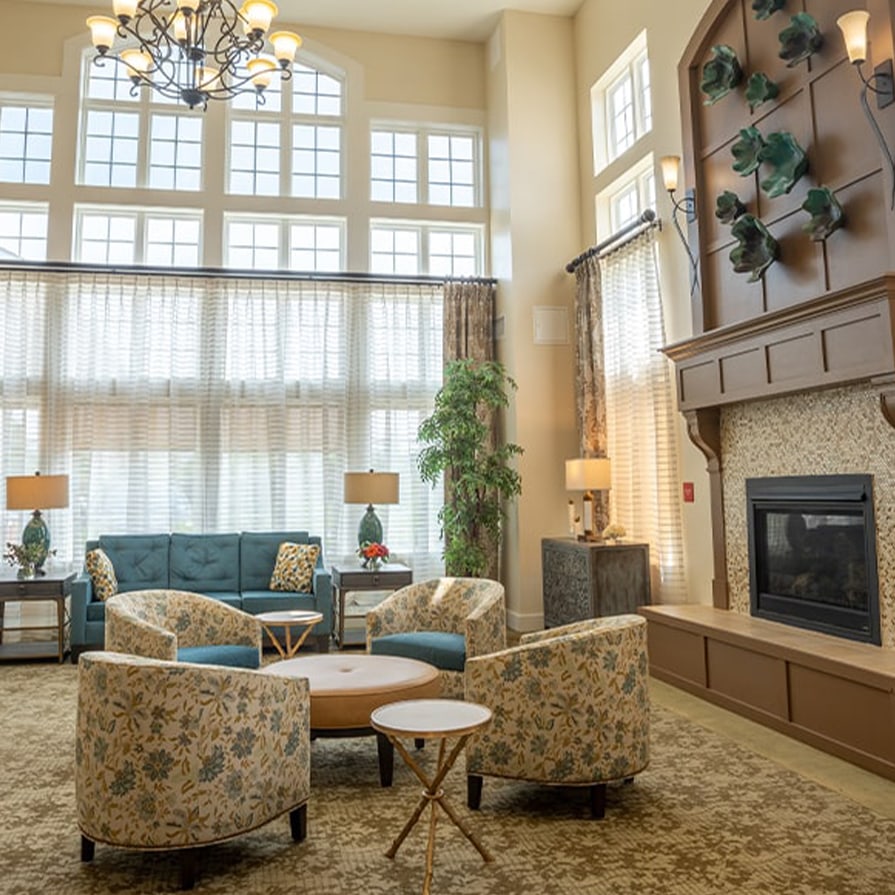Art therapy is an innovative and effective approach used in memory care at Juniper Village at Hamilton, specifically designed to assist individuals living with Alzheimer’s disease and other forms of dementia. This therapeutic method harnesses the power of creativity and expression through various art activities, including painting, drawing, sculpting, and collaging.
These activities not only serve as a means of self-expression but also foster communication and social interaction among residents, helping to alleviate feelings of isolation. Engaging in art therapy can stimulate cognitive functions and evoke memories, creating a safe space for individuals to explore their emotions and experiences.
By integrating these creative practices into their care routine, we aim to enhance the overall well-being and quality of life for residents, allowing them to connect with themselves and others in meaningful ways.
How Does Art Therapy Help?
Art therapy has many different benefits for those with dementia and other cognitive impairments. Here are the many ways art therapy can positively impact individuals in memory care at Hamilton:
- Improved Cognitive Function: Art therapy has been shown to improve cognitive function, especially in individuals with dementia. The process of creating art stimulates the brain and can help strengthen neural connections, improving memory and problem-solving skills.
- Emotional Release: For many residents, verbal communication may become difficult due to the progression of their condition. Art therapy provides an alternative outlet for expressing emotions, helping them release pent-up feelings and reduce anxiety and stress.
- Sense of Accomplishment: Completing a meaningful piece of artwork can provide a sense of accomplishment for individuals living with dementia, boosting their self-esteem and confidence. This also helps them maintain a sense of purpose and identity.
- Social Interaction: Participating in art therapy sessions allows residents to connect with others, whether it’s through working collaboratively on a group project or simply sharing their creations. This social interaction can improve mood and help combat feelings of loneliness and isolation.
- Memory Stimulation: Art therapy can evoke memories in individuals with dementia, providing an opportunity for them to reminisce and share stories related to their artwork. This not only helps preserve their memories but also creates meaningful moments for both the residents and their caregivers.
- Relaxation and Distraction: Creating art can be a calming and enjoyable activity for residents. It helps them relax and promotes a sense of inner peace.
Examples of Art Therapy Activities for Memory Care
There are many different mediums used within art therapy programs. The following are some examples of art therapy activities that can be beneficial for individuals in memory care at Juniper Village at Hamilton:
- Painting and Drawing: This classic activity allows residents to express their creativity and emotions through various mediums such as watercolors, acrylic paints, or colored pencils. It also helps improve fine motor skills and hand-eye coordination.
- Collage Making: Creating collages using magazine cutouts, photographs, and other materials can help stimulate memories and spark conversations among residents. It also encourages decision-making skills and allows them to reflect on past experiences.
- Sculpting with Clay: Working with clay is a tactile activity that can have a calming effect on individuals with dementia. It allows them to manipulate the material and create various shapes, providing a sense of control and accomplishment.
- Reminiscence Boxes: This activity involves creating boxes filled with personal items that hold significance to the individual. These boxes can serve as a tangible connection to their past and stimulate memories when they are feeling confused or agitated.
- Group Projects: Collaborative art projects such as creating a mural or decorating a communal space can promote teamwork and social interaction among residents. It also allows them to feel a sense of purpose and accomplishment.
- Virtual Art Programs: With the advancement of technology, virtual art programs have become more accessible for individuals with dementia. These programs offer a variety of art activities that can be done from the comfort of their own home, providing an opportunity for self-expression and creativity.
Enhancing Memory Care with Art Therapy at Hamilton Grove
At Juniper Village at Hamilton, we believe that incorporating art therapy into our memory care program is essential for promoting the overall well-being of residents. It provides opportunities for self-expression, emotional release, and social interaction, while also stimulating memory and cognitive function. Our trained staff works closely with residents to create a safe and nurturing environment for them to explore their creative side.
In addition to art therapy, we also incorporate other forms of creative expression into our memory care program such as music therapy and storytelling. These activities not only provide cognitive stimulation but also promote emotional well-being and social engagement.
Reach out to us for more information on our memory care program and how we incorporate art therapy into our daily activities. We would be happy to share the positive impact it has had on our residents and their overall quality of life.







